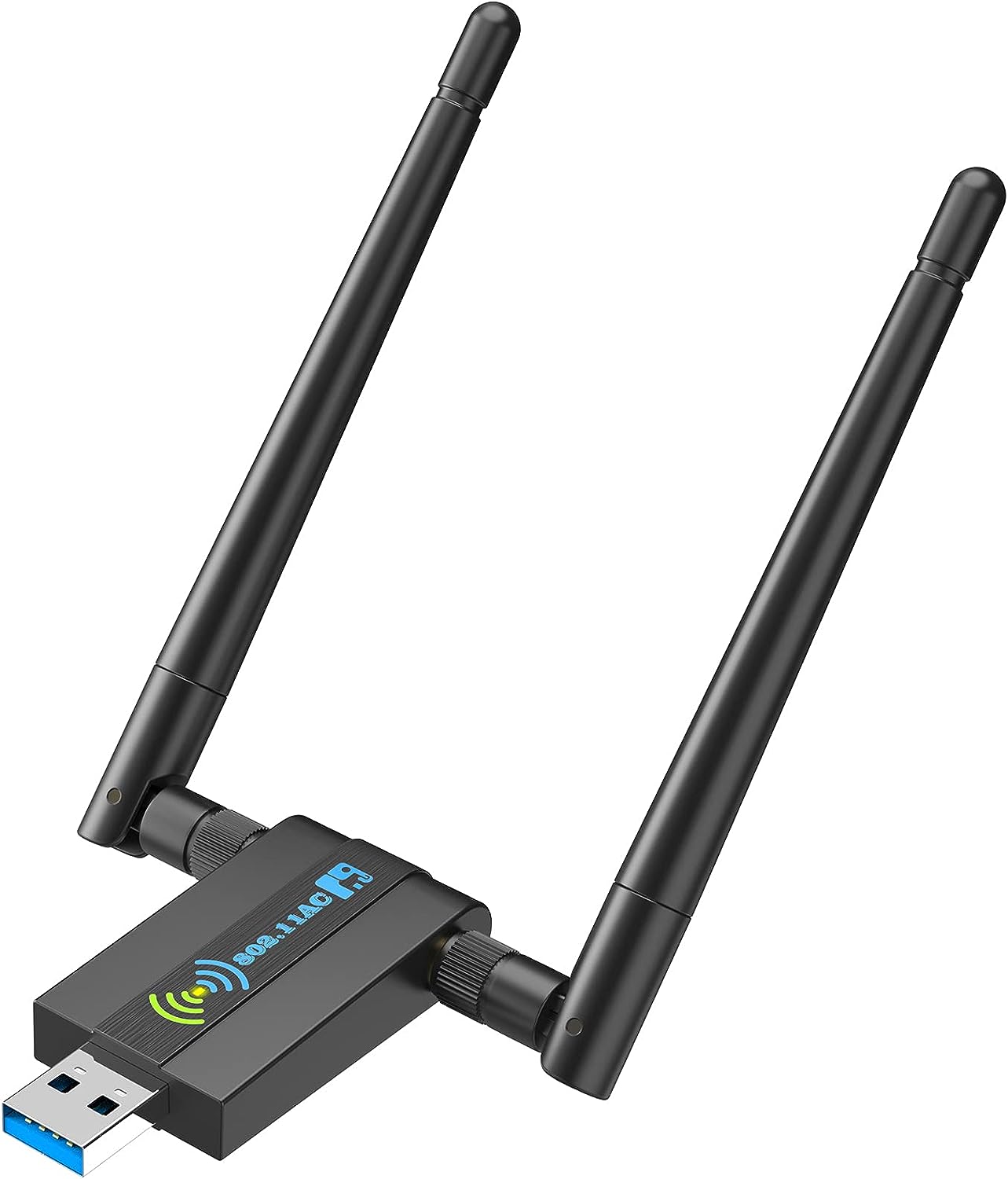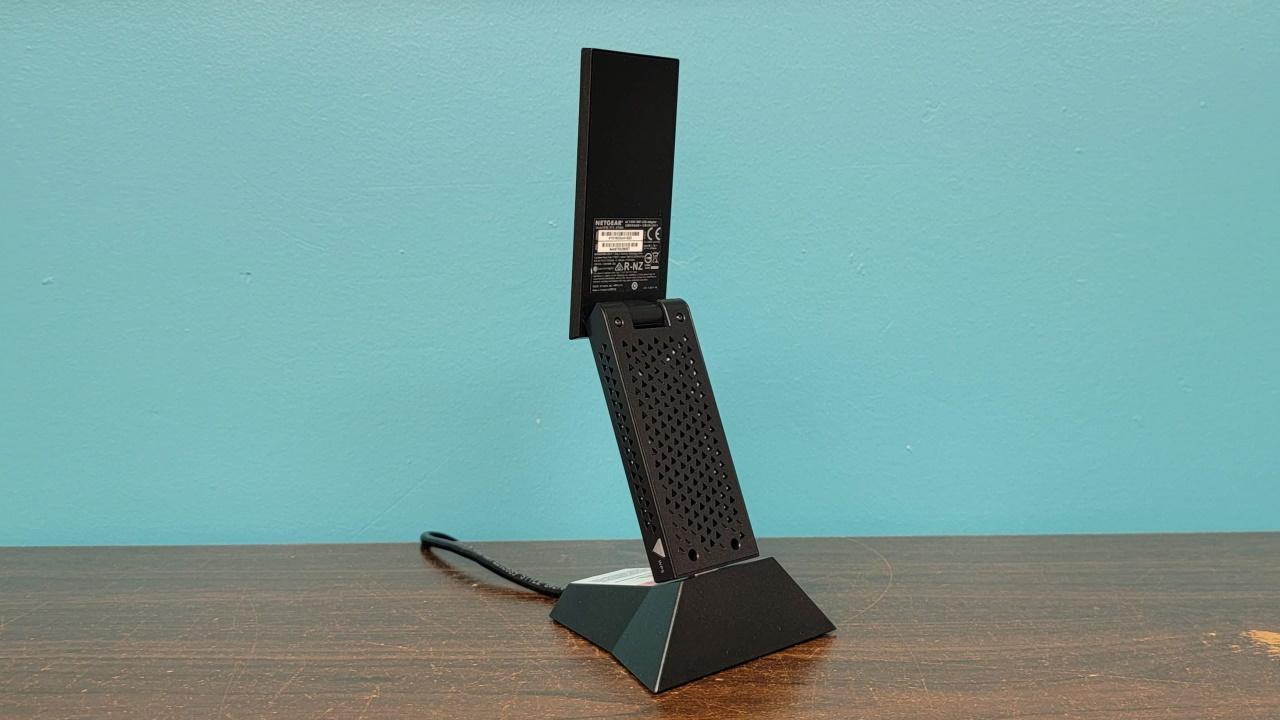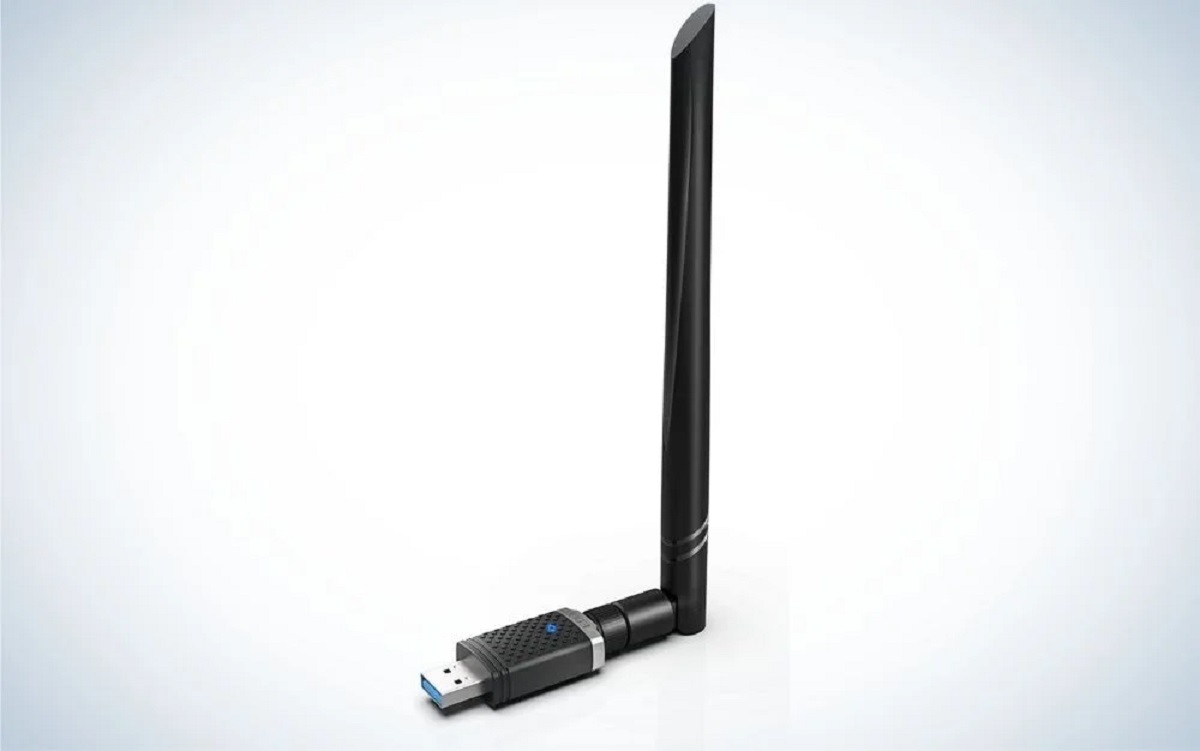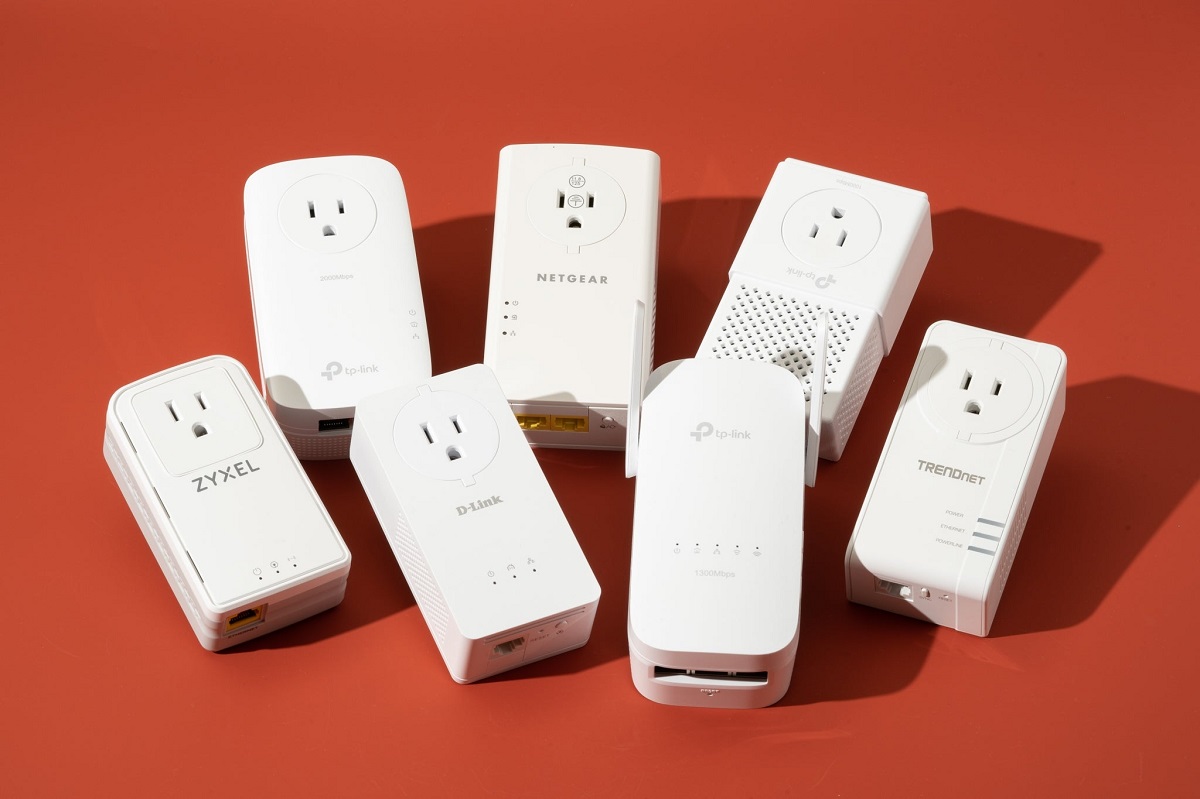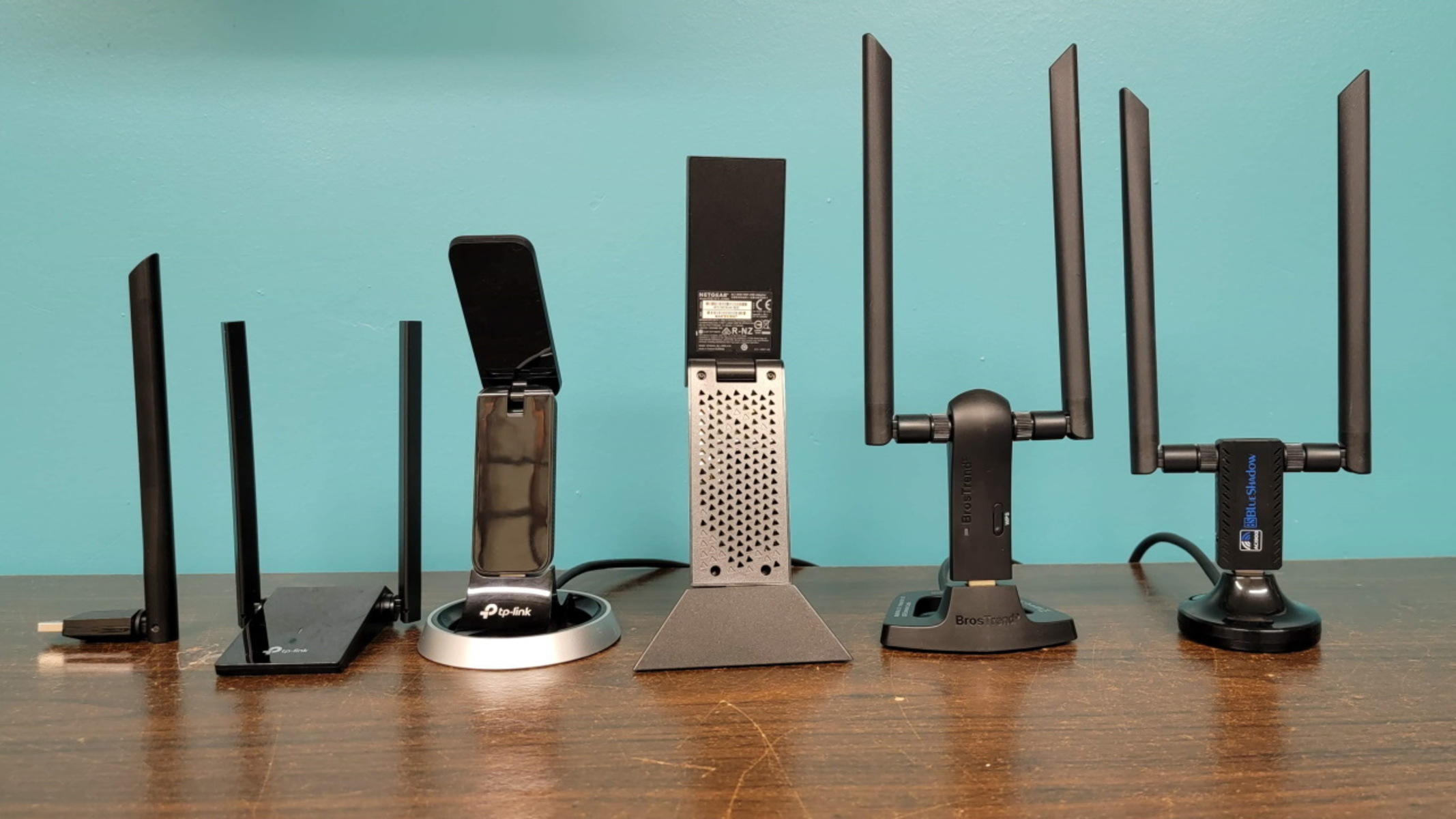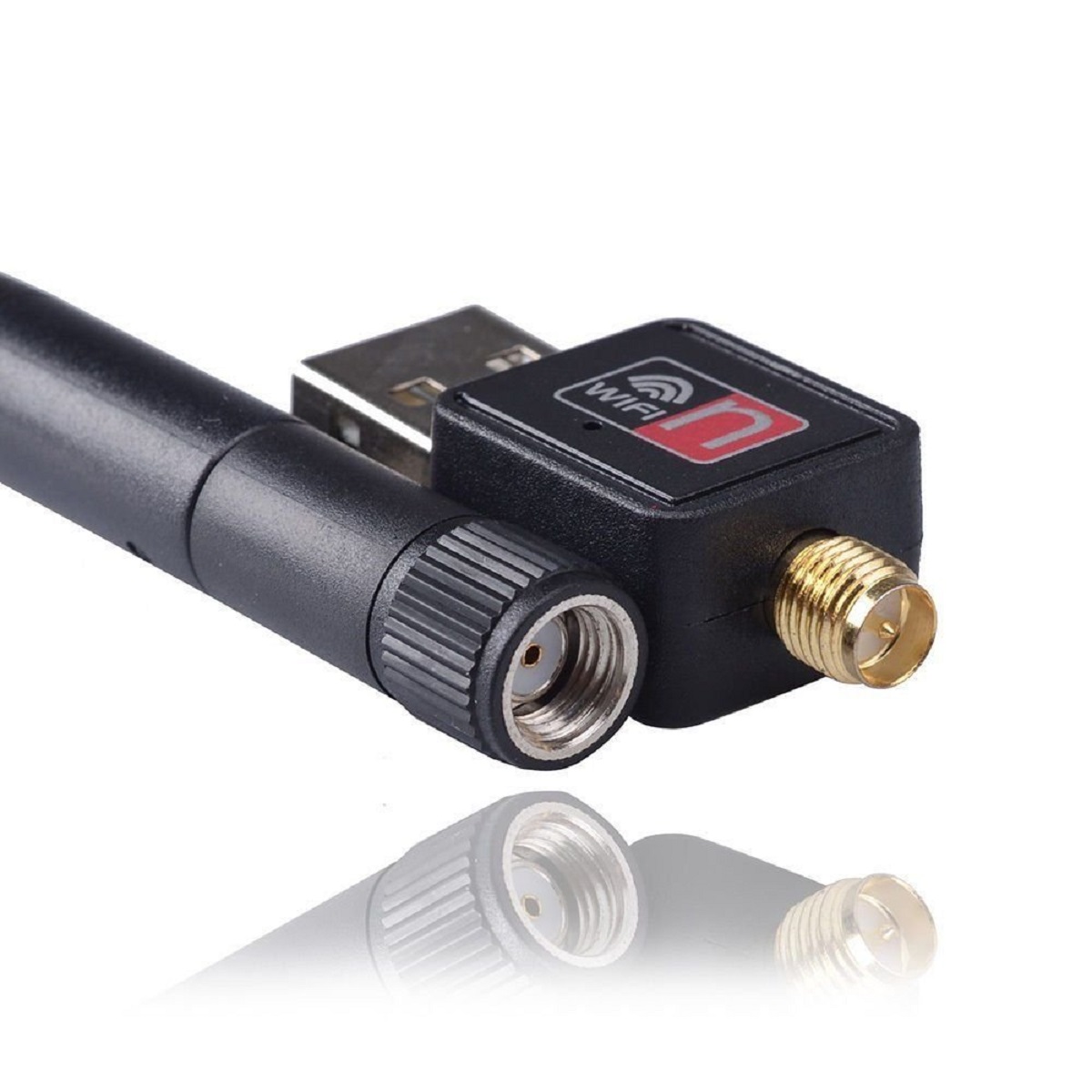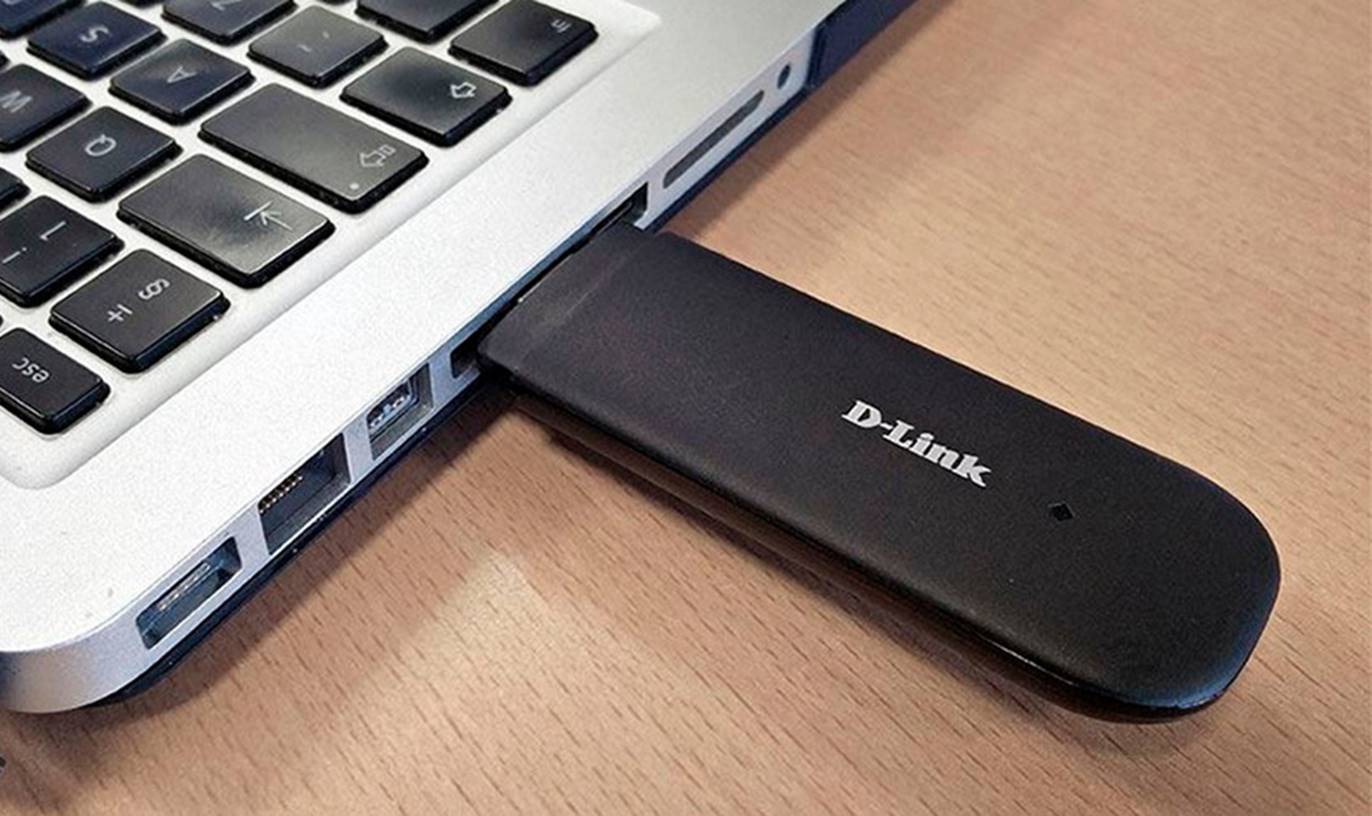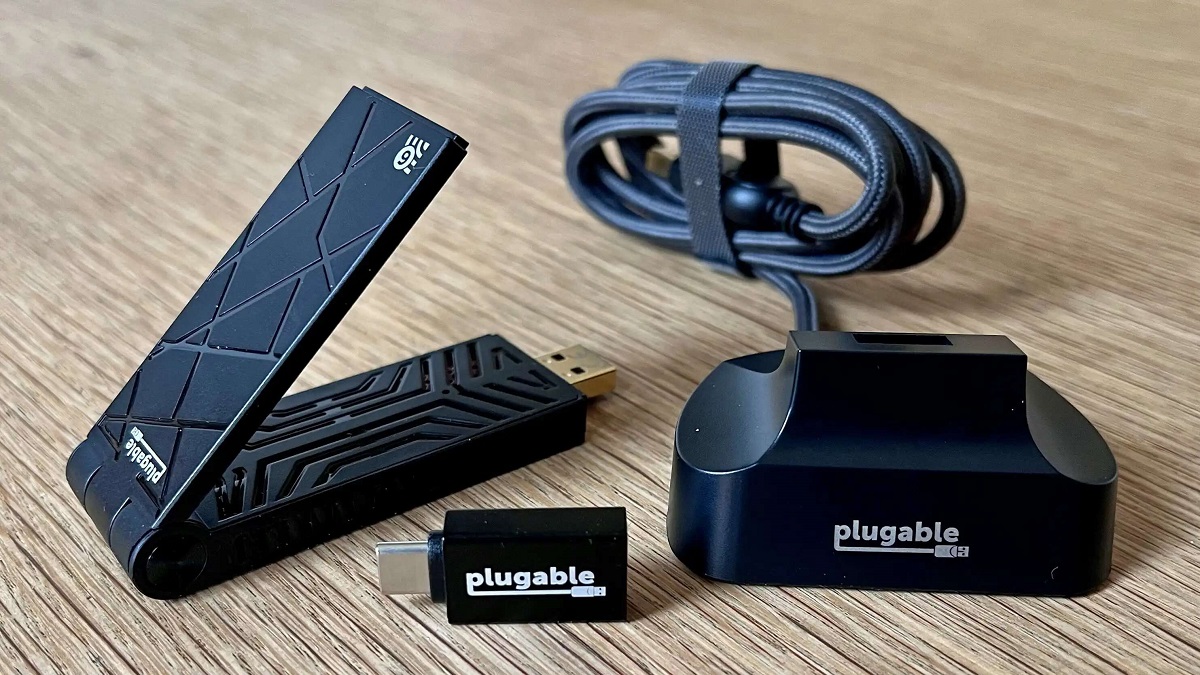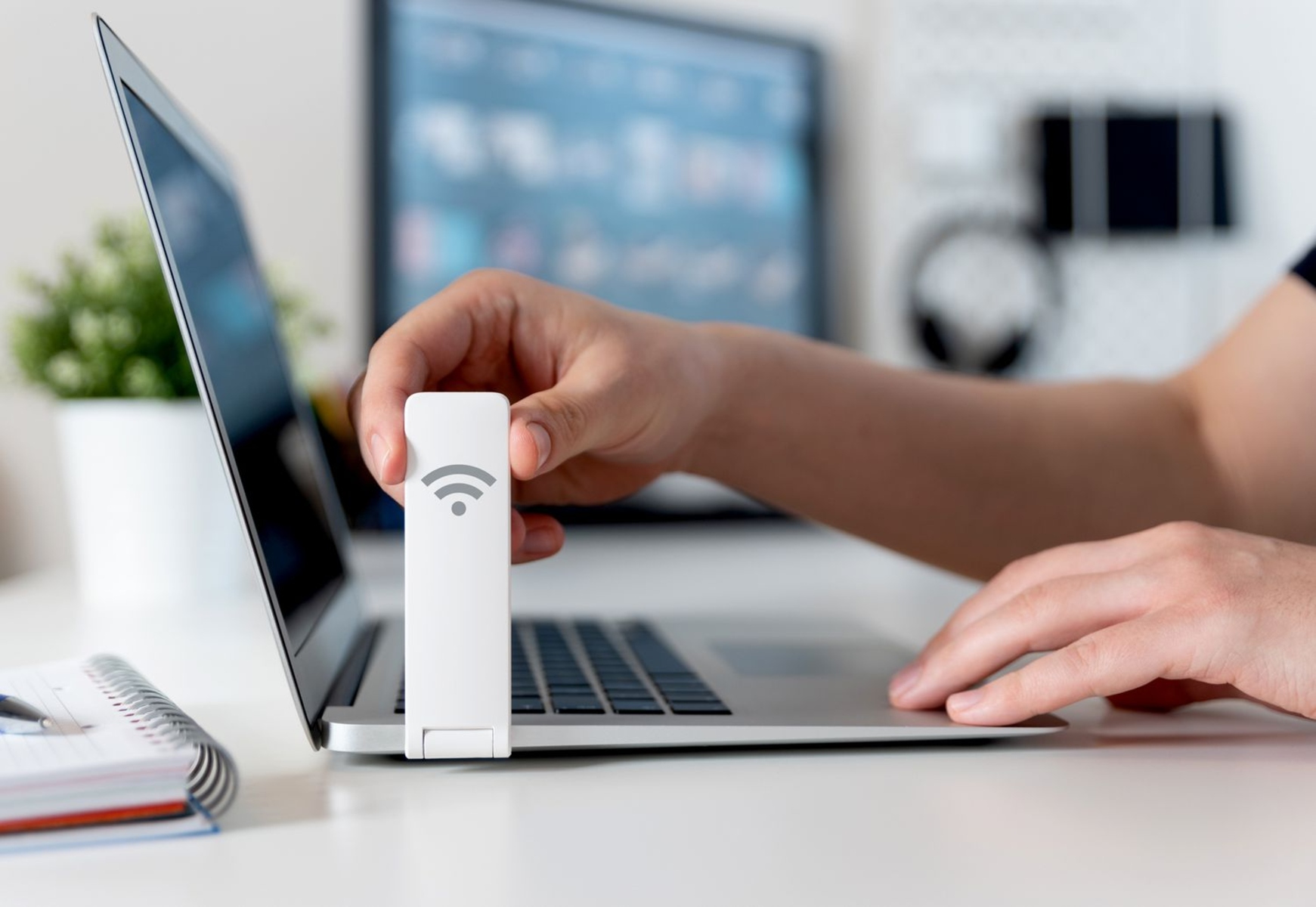Introduction
Welcome to the world of wireless connectivity! In today’s digital age, having a reliable and fast internet connection is crucial. Whether you’re a student, professional, or casual internet user, you’ve likely encountered the term “WiFi adapter.” But what exactly is a WiFi adapter, and what does it do?
A WiFi adapter, also known as a wireless adapter or network adapter, is a device that allows your computer, laptop, or other devices to connect to a wireless network. It acts as a bridge between your device’s operating system and the wireless network, enabling you to access the internet without the need for a physical connection.
In this article, we’ll explore the world of WiFi adapters, how they work, the different types available, and the benefits they offer. Whether you’re looking to upgrade your existing adapter or considering adding wireless connectivity to your device for the first time, this guide will provide you with the essential information you need to make an informed decision.
What is a WiFi Adapter?
A WiFi adapter, sometimes referred to as a wireless adapter or network adapter, is a hardware device that allows your computer, laptop, or other devices to connect to a wireless network. It serves as the intermediary between your device’s operating system and the wireless network, enabling you to access the internet or share files with other devices within the network.
At its core, a WiFi adapter converts the digital data from your device into radio signals that can be transmitted wirelessly. It receives the wireless signals from the router or access point and converts them back into digital data that your device can interpret. This allows you to establish a connection with the wireless network, whether it’s a home network, office network, or a public WiFi hotspot.
WiFi adapters come in various forms, including USB adapters, PCI cards, and built-in adapters in laptops and smartphones. USB adapters are the most common type and are typically plug-and-play, allowing for easy installation and setup. PCI cards are internally installed in desktop computers and offer higher performance and stability. Built-in adapters, on the other hand, are pre-installed in laptops and smartphones, eliminating the need for an external device.
In addition to providing wireless connectivity, WiFi adapters also support different WiFi standards, such as 802.11n, 802.11ac, and the latest 802.11ax (Wi-Fi 6). These standards determine the maximum speed and range of the wireless connection, so it’s crucial to choose an adapter that is compatible with the WiFi standard supported by your router or access point to ensure optimal performance.
Overall, a WiFi adapter is an essential component for connecting your device to a wireless network. Whether you’re using a desktop computer without built-in WiFi capability or need to upgrade the wireless connectivity of your laptop, a WiFi adapter offers the convenience and flexibility of accessing the internet and network resources without being tethered by cumbersome cables.
How Does a WiFi Adapter Work?
Understanding how a WiFi adapter works can help you appreciate its functionality and the magic of wireless connectivity. So, let’s dive into the inner workings of a WiFi adapter.
A WiFi adapter consists of several key components that work together to establish a wireless connection. The main components include a radio transmitter, a radio receiver, an antenna, and a driver software.
The radio transmitter within the WiFi adapter takes the digital data from your device’s operating system and converts it into radio signals. These signals are then transmitted using the antenna, which sends them over the airwaves.
On the receiving end, the radio receiver within the WiFi adapter captures the wireless signals from the router or access point. It then converts these signals back into digital data, allowing your device’s operating system to interpret and utilize the data.
The effectiveness and range of a wireless connection depend on various factors, including the signal strength, interference, and the capabilities of the WiFi adapter and the router or access point. To ensure a stable and high-speed connection, it’s essential to have a WiFi adapter and router that support the same WiFi standards and utilize advanced technologies, such as Multiple Input Multiple Output (MIMO) and beamforming.
The driver software of the WiFi adapter plays a critical role in facilitating the communication between the adapter and your device’s operating system. It enables the proper installation and configuration of the adapter, allowing your device to recognize and utilize its wireless capabilities.
When you connect your WiFi adapter to your device, whether it’s through a USB port or internal installation, the driver software is typically automatically installed. However, it’s always a good practice to ensure that you have the latest drivers for your WiFi adapter to benefit from any performance improvements or bug fixes.
Overall, a WiFi adapter works by converting digital data into radio signals, transmitting them wirelessly through an antenna, and receiving wireless signals from the router or access point. It’s a remarkable piece of technology that enables the wireless connectivity we rely on in our day-to-day lives.
Types of WiFi Adapters
WiFi adapters come in various types, each offering its own set of advantages and features. Understanding the different types can help you choose the adapter that best suits your needs. Let’s explore the most common types of WiFi adapters:
- USB Adapters: USB adapters are the most popular and versatile type of WiFi adapters. They are small, portable devices that you can easily connect to your computer or laptop’s USB port. USB adapters are often plug-and-play, meaning they require minimal setup and are compatible with a wide range of devices. They are an excellent choice for those looking for flexibility and ease of use.
- PCI Adapters: PCI adapters, also known as internal WiFi cards, are installed directly onto the motherboard of desktop computers. They provide a stable and high-performance WiFi connection and are a popular choice for gamers and users who require fast and reliable internet speeds. While PCI adapters require internal installation, they offer the advantage of not occupying external USB ports.
- PCIe Adapters: PCIe (Peripheral Component Interconnect Express) adapters are similar to PCI adapters but utilize the PCIe interface for faster data transfer rates. These adapters are designed for desktop computers equipped with PCIe slots. They offer faster and more reliable WiFi connectivity compared to USB or standard PCI adapters and are ideal for demanding tasks such as online gaming, streaming, and downloading large files.
- ExpressCard Adapters: ExpressCard adapters are primarily used with laptops and offer a quick and easy way to add WiFi functionality to devices that do not have built-in wireless capabilities. They utilize the ExpressCard slot found on older laptops and provide a stable and reliable wireless connection. ExpressCard adapters are portable and can be easily swapped between different devices.
- M.2 WiFi Adapters: M.2 WiFi adapters are small, sleek, and often found in modern laptops and small form factor PCs. They use the M.2 slot, a newer interface designed for high-speed data transfer. M.2 adapters support the latest WiFi standards, such as 802.11ac and 802.11ax (Wi-Fi 6), providing faster and more reliable wireless connectivity.
When choosing a WiFi adapter, consider the compatibility with your device, the range and speed requirements, and your specific usage scenarios. Each type of WiFi adapter has its own benefits and limitations, so it’s important to choose one that aligns with your specific needs.
Benefits of Using a WiFi Adapter
Using a WiFi adapter offers several advantages and benefits that enhance your internet experience and provide you with greater flexibility. Let’s explore some of the key benefits of using a WiFi adapter:
- Wireless Connectivity: A WiFi adapter allows you to connect to a wireless network, eliminating the need for Ethernet cables. This offers greater mobility and convenience, allowing you to connect to the internet from anywhere within the network range.
- Easy Installation: Most WiFi adapters are plug-and-play devices, meaning they are incredibly easy to install and set up. You don’t need advanced technical knowledge or complicated wiring. Simply connect the adapter to your device, install the necessary drivers, and you’re ready to go.
- Flexibility: With a WiFi adapter, you can connect multiple devices to the internet simultaneously. Whether you’re using a laptop, desktop computer, smartphone, or any other WiFi-enabled device, you can enjoy the convenience of wireless connectivity without limitations.
- Improved Performance: WiFi adapters support various WiFi standards, such as 802.11n, 802.11ac, and 802.11ax. These standards provide higher speeds, improved range, and better overall performance compared to older wireless technologies. Upgrading to a newer WiFi adapter enables you to take advantage of these advancements and enjoy a faster and more reliable internet connection.
- Extended Range: WiFi adapters with advanced antenna technology offer extended range capabilities. This means you can connect to WiFi networks that are farther away, providing you with greater flexibility and access to the internet even when you are not in close proximity to the router.
- Secure Connections: WiFi adapters support various security protocols such as WEP, WPA, and WPA2, ensuring a secure and encrypted connection between your device and the wireless network. This helps protect your personal information and ensures that your data is transmitted safely.
- Compatibility: WiFi adapters are compatible with a wide range of devices, including computers, laptops, gaming consoles, and smart TVs. This means you can easily add wireless connectivity to your existing devices without the need for extensive upgrades or modifications.
These benefits make WiFi adapters a valuable addition to your devices, providing you with the convenience, flexibility, and high-speed internet connectivity you need in today’s digital world.
Considerations When Choosing a WiFi Adapter
Selecting the right WiFi adapter is essential to ensure optimal performance and compatibility with your devices and network. Here are some important factors to consider when choosing a WiFi adapter:
- Compatibility: Ensure that the WiFi adapter you choose is compatible with your device’s operating system. Whether you’re using a Windows, macOS, or Linux-based system, check for driver compatibility and supported operating systems before making a purchase.
- WiFi Standards: Consider the WiFi standard supported by the adapter. The latest standards, such as 802.11ac and 802.11ax (Wi-Fi 6), offer faster speeds and improved performance. However, make sure your router or access point also supports the same standard for optimal compatibility and performance.
- Speed and Range: Determine your speed and range requirements based on your internet usage and the size of your living or working space. If you require high-speed internet or need coverage for a large area, opt for a WiFi adapter with higher data transfer rates and an extended range.
- Antenna Configuration: Consider the antenna configuration of the WiFi adapter. External antennas usually provide better signal strength and range compared to internal antennas. Additionally, adjustable and detachable antennas allow for flexibility in positioning and signal optimization.
- USB Port or Expansion Slot: Determine whether you prefer a USB adapter or an internal expansion card. USB adapters offer portability and compatibility with various devices, while expansion cards provide stability and higher performance. Ensure that your device has an available USB port or expansion slot for the chosen adapter.
- Budget: Set a budget for your WiFi adapter purchase. Prices can vary depending on the features, performance, and brand. While it’s important to consider your budget, also ensure that you choose a reliable and reputable brand to ensure the longevity and quality of your WiFi adapter.
- Reviews and Recommendations: Read customer reviews and seek recommendations from trusted sources. This will provide insight into the real-world performance and reliability of the WiFi adapter you are considering. Pay attention to reviews that align with your specific needs and requirements.
By considering these factors and conducting thorough research, you can choose a WiFi adapter that meets your specific requirements and ensures a seamless wireless experience with your devices and network.
How to Install a WiFi Adapter
Installing a WiFi adapter may seem daunting if you’re not familiar with hardware installations, but it’s actually a straightforward process. Here’s a step-by-step guide on how to install a WiFi adapter:
- Choose the right WiFi adapter: Ensure that you have selected a WiFi adapter that is compatible with your device and operating system. Check the specifications and requirements provided by the manufacturer.
- Prepare your device: Turn off your computer or laptop and disconnect any power source. If you are using a desktop computer, ensure that you have an available PCI slot or PCIe slot for installation.
- Open your computer case: In the case of a desktop computer, remove the screws or clips that secure the case. Carefully open the case to gain access to the internal components. Be cautious of any static electricity by grounding yourself before touching any components.
- Insert the WiFi adapter: Locate the appropriate slot (PCI or PCIe) on the motherboard. Gently insert the WiFi adapter into the slot, ensuring that it is securely connected. For USB adapters, simply plug the adapter into an available USB port on your device.
- Secure the WiFi adapter: If you are installing a PCI or PCIe adapter, use the screws provided to secure the WiFi adapter to the computer case. This ensures stability and prevents any movement that could interfere with the wireless signal.
- Close the computer case: After confirming that the WiFi adapter is securely installed, carefully close the computer case and reinsert the screws or clips to secure it. Make sure that all connections are intact and nothing is loose.
- Turn on your device: Once the installation is complete, reattach any power sources and turn on your computer or laptop. The operating system should detect the new WiFi adapter and prompt you to install the necessary drivers.
- Install the drivers: Follow the on-screen instructions to install the drivers for your WiFi adapter. You may need to use the driver installation CD that came with the adapter or download the latest drivers from the manufacturer’s website. Restart your device if prompted.
- Connect to a wireless network: Once the drivers are installed and your device has restarted, navigate to the network settings on your device. Select the appropriate wireless network and enter the password if prompted. Your device should now be connected to the WiFi network!
Remember, each WiFi adapter may have slight variations in the installation process, so it’s always a good idea to refer to the manufacturer’s instructions for specific guidance. With these steps, you’ll be able to successfully install a WiFi adapter and enjoy wireless connectivity on your device.
Troubleshooting WiFi Adapter Issues
While WiFi adapters are generally reliable, occasional issues may arise that hinder their performance. Here are some common problems you may encounter with a WiFi adapter and steps to troubleshoot them:
- Poor Signal or Limited Range: If you are experiencing a weak signal or limited range, try repositioning the WiFi adapter or adjusting the antenna. Ensure that there are no physical obstructions between the adapter and the wireless router.
- Driver Issues: Outdated or incompatible drivers can cause connectivity problems. Update the drivers for your WiFi adapter to ensure compatibility with your operating system and improve its performance. Visit the manufacturer’s website to download the latest drivers.
- Interference: Wireless signals can be affected by interference from other devices or nearby networks. Reduce interference by moving devices like cordless phones, baby monitors, and microwaves away from your WiFi adapter and router.
- Network Congestion: If you are experiencing slow internet speeds, there may be too many devices connected to your network. Limit the number of connected devices or consider upgrading your router to handle higher bandwidth.
- Incorrect Network Configuration: Double-check the network settings on your device to ensure that you are connecting to the correct network. Verify the password and security settings to establish a successful connection.
- Reboot Your Router and Device: Sometimes, simply rebooting your router and device can resolve connectivity issues. Power off both the router and your device, wait for a few seconds, and then power them back on.
- Reset Network Settings: If all else fails, you can try resetting your network settings. On your device, go to the network settings and choose the option to reset network settings. Keep in mind that this action will remove all saved WiFi network information, so be prepared to re-enter passwords.
- Seek Professional Assistance: If you have tried all the troubleshooting steps and are still experiencing issues, it may be beneficial to seek assistance from a professional or contact the customer support service of the WiFi adapter’s manufacturer for further guidance.
Remember, troubleshooting steps may vary depending on your specific device and WiFi adapter. Consult the user manual or the manufacturer’s website for detailed instructions and troubleshooting tips specific to your WiFi adapter model.
Conclusion
WiFi adapters play a crucial role in enabling wireless connectivity for your devices, offering flexibility, convenience, and high-speed internet access. Whether you’re upgrading an existing adapter or adding wireless functionality to a device for the first time, understanding how WiFi adapters work and considering important factors can help you make an informed decision.
In this article, we learned about the different types of WiFi adapters, including USB adapters, PCI cards, and built-in adapters in devices like laptops and smartphones. We explored the benefits of using a WiFi adapter, such as wireless connectivity, easy installation, improved performance, extended range, and enhanced security.
When selecting a WiFi adapter, it’s important to consider factors such as compatibility, WiFi standards, speed, range, antenna configuration, and your budget. Additionally, understanding how to install a WiFi adapter and troubleshoot common issues can help you enjoy a seamless wireless experience.
Remember, each WiFi adapter has its pros and cons, and it’s crucial to choose one that aligns with your specific needs and requirements. Read product reviews, seek recommendations, and consult with experts or customer support if needed.
By choosing the right WiFi adapter and following proper installation and troubleshooting steps, you can enjoy the freedom of wireless connectivity, connect multiple devices to the internet, and experience faster and more reliable internet speeds. Embrace the power of technology and take advantage of WiFi adapters to unlock the full potential of your devices in the wireless world.







